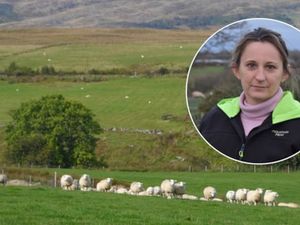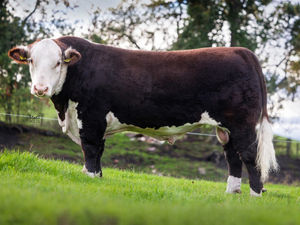Farming Talk: Johne's in the herd won't go away by itself
"There is no such thing as a Johne's-free herd" was a key message of a recent national conference held to discuss the progress of controlling this hidden disease.
Mycobacterium avium subspecies paratubercolis, for the latin scholars, also referred to by as MAP, has sprinkled its threats onto the world's dairy industry for many years now.
The disease was first recognised in 1895, but in the UK it has been overshadowed by the bigger issues of BSE, TB, Foot and Mouth disease, and production diseases such as mastitis and lameness.
Johne's disease is an infectious, wasting condition in beef and dairy cattle and can affect other ruminants such as sheep, goats, deer, bison and antelopes. The disease progressively damages the intestines of infected animals and results in persistent diarrhoea, severe weight loss, reduced milk yield and infertility. Animals can eventually die.
It is predominately a sub-clinical disease which makes detection more difficult. When a case of Johne's is discovered in a herd, it is likely many other animals will be developing the disease. As early signs are reduced milk output and infertility, animals are often culled from the herd for due to this without Johne's being recognised as the culprit.
On the basis that Johne's disease was a threat to efficient dairy production, vets, farmers, milk companies, Government and so on came together in 2009 and formed a national action group. The aims were to raise awareness and understanding of the disease, its effects and its consequences. In the longer term the aim is to encourage commercially viable ways of managing the disease and to reduce its prevalence in the national herd.
Accurate testing for presence of the disease in cattle has always been problematic, but the best available information suggests that Johne's is present in 60 to 70 per cent of UK dairy herds where one or more cows are infected. The cycle of infection, as was pointed out by a leading veterinary specialist, is the infected cow which infects its calf through milk or faeces or before the calf is born. The calf enters the milking herd as a heifer, apparently healthy, and gradually develops the disease. So the cycle continues.
The strategy developed by the industry Action Group includes keeping herds not yet infected clear of Johne's with uninfected herds under constant surveillance to detect early infection. As with most diseases, biosecurity is the key word. Key to good biosecurity is removing diseased cattle, screening the herd, strict hygiene at milking time and around the farm generally, especially at calving, protecting calves, and managing grazing.
A vaccine is available, but as yet it is only suitable in limited conditions, but there are testing programmes provided by schemes to help prevent and control the disease.
The positive news is that farmers are increasingly developing herd health planning programmes in conjunction with their vet and other specialist advisers and, as was reported the conference, significant numbers are now engaging in Johne's management. As with other things in life, the first step in dealing with a problem is to recognise that it exists. This hidden disease does exist and, although the science is now well understood, there is no quick fix.
This is not the time for heads in the sand because, what is for certain, is that Johne's won't go away on its own.
John Sumner is secretary of Shropshire Chamber of Agriculture





